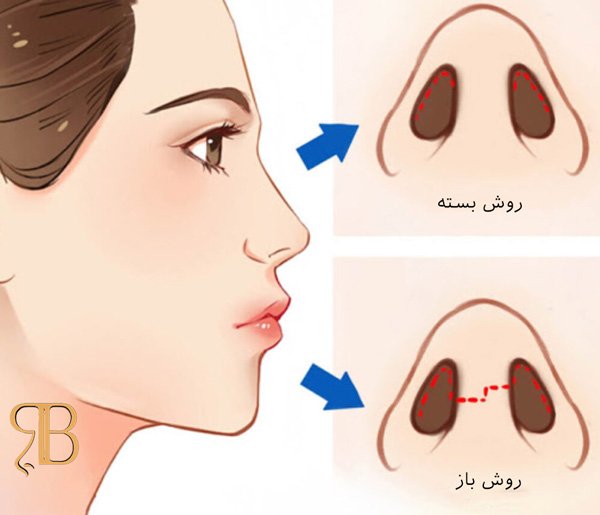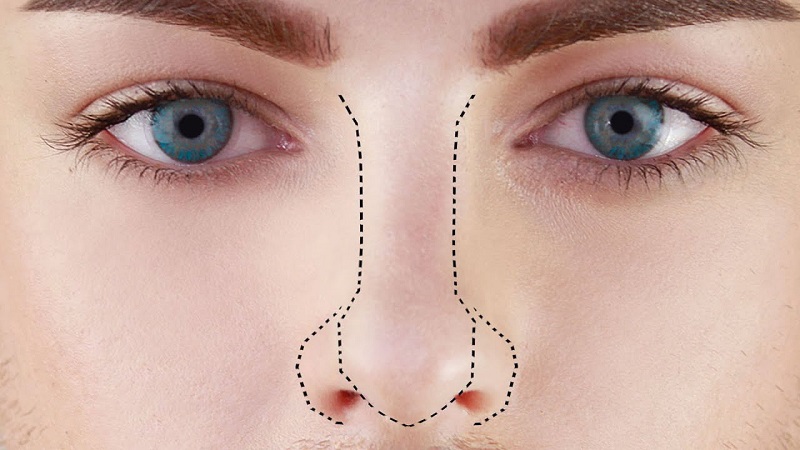Nose job in Iran
Nose job in Iran , also called rhinoplasty, is an operation to change the shape of the nose. This surgery can be done for cosmetic or restorative reasons. In the following, we will mention various things that may be considered before, during, and after rhinoplasty surgery:
Before surgery
– Consultation with the surgeon: to check the expectations and goals related to the surgery.
– Medical tests: in order to ensure sufficient health to perform surgery.
Pre-surgery instructions: may include food and drug restrictions and smoking cessation.
during surgery
– Anesthesia: usually done under general anesthesia.
– Surgical techniques: May include internal (closed) or external (open) incisions in different areas of the nose.
– Structural changes: changes in the shape of the bones, cartilage or skin of the nose.
After surgery
– Recovery period: it usually takes a few weeks.
– Swelling and bruising: these complications usually decrease after a few days to a few weeks.
Post-surgery care: including using ice compresses, taking prescribed medications and avoiding heavy activities.
important points
– Choosing a surgeon: performing surgery by a specialist and experienced doctor.
– Realistic expectations: results can vary and are not always exactly as expected.
– Considering possible complications: every surgery has its own risks and complications.
Conclusion
Nose job in Iran is a big decision that must be made carefully and after considering all aspects. Detailed consultation with the surgeon and having sufficient information about the surgical process and the recovery period are very important.

Types of noses in rhinoplasty
In Nose job in Iran , there are different types of noses, based on which plastic surgeons determine the appropriate surgical approach. These types are defined based on the appearance, bony and cartilaginous structure of the nose, as well as the proportion of the nose with other parts of the face. Here are some of the types of noses that may be considered in rhinoplasty:
fleshy nose
– Meat noses usually have thicker skin and softer cartilage.
– Swelling after surgery may be longer.
– Surgeons must operate more carefully to have a natural and long-lasting result.
bony nose
This type of nose has thinner skin and stronger bones and cartilage.
– Structural changes are usually clearer and less swelling.
Surgery may include bone shaving and cartilage reshaping.
humped nose
– Many people choose surgery to remove the bony hump of their nose.
– This type of surgery can include reducing or shaving the bony protrusion.
Crooked or deviated nose
– Nasal septum deviation can be surgical for cosmetic or respiratory reasons.
Surgery may include nasal septum correction to improve the airway.
A nose with a lowered tip
– Some people tend to raise the tip of their nose, which is drooping downwards.
– This change may include strengthening the cartilages of the tip of the nose.
A nose with a wide or large tip
– Shrinking or narrowing the tip of the nose can include removing part of the cartilage or changing its shape.
Cultural or ethnic type of vision
– People who want to have their nose operated but do not want to lose their cultural or ethnic characteristics, may perform certain surgeries under the name of “ethnic rhinoplasty”.
– This type of surgery is designed with the aim of preserving ethnic characteristics.
Nose with large nostrils
– Shrinking nostrils can be done with special surgical techniques to reduce their size.
In each case, the surgeon must design a customized surgical plan for his patient that takes into account both the aesthetic results and the patient’s individual identity and expectations. Also, maintaining or improving nasal function, such as breathing, should also be a priority.
What to expect from rhinoplasty surgery
Expectations from rhinoplasty surgery should be realistic and based on accurate information. Here are a few things to keep in mind before deciding on a Nose job in Iran:
Realistic goals
Expect your nose to heal, not completely.
Rhinoplasty should improve the fit of your nose with other facial features.
Pre-surgery information
– Have a detailed consultation with a nose surgeon to understand the goals and limitations of the surgery.
Ask your surgeon to explain possible outcomes using 3D images or simulation software.
Convalescence
Expect some swelling and bruising after surgery, which usually subsides within a few weeks.
It is important to plan for adequate rest and recovery after surgery.
Long-term results
Final changes to the nose may not appear until a year after surgery, especially if your skin is thick.
– Minor swelling can remain for a longer period of time, especially on the tip of the nose.
Limitations and risks
Any surgery has risks, including infection, bleeding, or breathing problems.
Understand that rhinoplasty results cannot be predicted with 100% certainty.
Communication with the surgeon
It is very important to have a good and clear communication with your nose surgeon.
Asking questions and voicing your concerns before surgery will help make your expectations clear.
Post-surgery care
Follow your post-surgery care instructions exactly to help with recovery and reduce the risk of complications.
Possible need for reconstructive surgery
– In some cases, expectations from rhinoplasty surgery should be realistic and based on accurate information. Here are some points to consider before deciding to have a Nose job in Iran
Nose surgery techniques
Nose job in Iran, also called rhinoplasty, involves several different techniques that surgeons choose based on patients’ aesthetic needs and goals. Here are two main methods and related techniques:
1. Open Rhinoplasty
In the open procedure, the surgeon makes a small incision in the columella (the soft part between the nostrils) and lifts the skin of the nose to gain access to the underlying bones and cartilage. This method allows the surgeon to have a better view of the structure of the nose and apply more precise changes.
Techniques related to open rhinoplasty:
– Changing the shape of the tip of the nose: reshaping or reducing the shape of the tip of the nose by changing the shape of the cartilages.
– Osteotomy: breaking and repositioning the nasal bones to change the shape or width of the nose.
– Cartilaginous clamps: using cartilage to support or change the shape of the nose.
2. Closed Rhinoplasty
In the closed method, all incisions are made inside the nostrils. This method eliminates external incisions and scars caused by them. This technique may be used for smaller changes.
Techniques related to closed rhinoplasty:
– Removing or adding cartilage without the need for external incisions.
– Minor adjustments to the shape of the nose without extensive intervention.
Other techniques
– Tipoplasty: focusing on changing the shape of the tip of the nose, without changing the bridge of the nose.
– Techniques for preserving the structure: preserving the natural structure of the nose as much as possible until it has a more natural shape after rhinoplasty.
– Non-surgical rhinoplasty: using fillers to make minor changes in the nose without the need for surgery.
– Reconstructive rhinoplasty: performing additional surgeries after the primary surgery to correct problems or adverse results.
Choosing the right technique
The choice of rhinoplasty technique depends on the aesthetic goals of the patient, the current structure of the nose, skin and other individual factors. During the consultation with the patient, the nasal surgeon examines these factors to determine the best method for each individual.
The importance of choosing a surgeon
It is very important to choose a surgeon who has sufficient expertise and experience in performing rhinoplasty. The surgeon must have the ability to evaluate the individual characteristics of the patient and implement the appropriate techniques to achieve the best possible results. Ensuring the surgeon’s professional qualifications and previous work portfolio can help.
Recovery stages after rhinoplasty surgery
Recovery after Nose job in Iran is a gradual process and the duration and experience of each person will be different. Here is an overview of the recovery stages and important points that patients should keep in mind during this period:
Recovery stages after Nose job in Iran
The first week:
– Bruising and swelling: Bruising and swelling around the eyes and nose are common and reach their peak during this period.
– Rest: It is recommended to rest a lot with the head higher than the level of the heart.
– Activity restrictions: Avoid vigorous activities, bending, lifting heavy objects and other activities that may put pressure on the nose.
– Nutrition: it is recommended to eat soft and easy-to-chew foods.
Second to fourth week:
– Reduction of bruising and swelling: swelling and bruising will gradually decrease.
– Follow-up care: removal of plaster or nasal band is usually done in this period of time.
– Nose care: The patient should avoid damaging his nose and avoid wearing glasses so as not to put pressure on the nose.
Second to sixth month:
– Subtle changes: The nose gradually regains its final shape, but there may still be slight swelling.
– Gentle activities: Gentle sports activities may be resumed with the permission of the surgeon.
Sixth month to one year:
– The final result: the swelling should be significantly reduced and the final results of the nose should be determined.
– Complete improvement: the soft tissues of the nose are really improved and the final shape of the nose is established.
Important tips for recovery
– Following the instructions of the surgeon: The post-operative instructions of the surgeon must be followed carefully.
– Use of drugs: use of prescribed drugs


